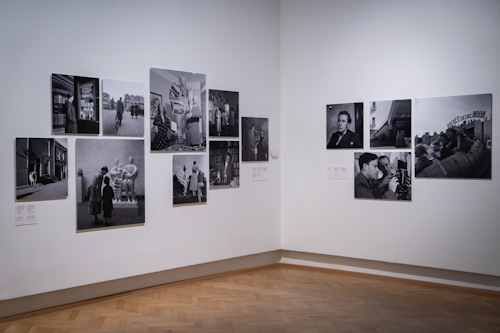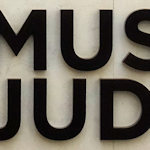I can’t visit every exhibition in Vienna, but I try and visit as many as possible at the Jewish Museum. The curators combine expertise with emotion, giving time and space to stories both familiar and untold.
This archive covers my experiences from trips around various previous exhibitions hosted by this institution.
Selected reviews

(View of the Maria Austria exhibition; press photo © David Bohmann)
Who Cares? (2024)
Attention turned to the better side of human nature in the Who Cares? exhibition. It detailed how the Jewish community helped alleviate suffering across Vienna’s past, often under difficult (to say the least) circumstances. The mix ran from Freud to midwives and medieval doctors.
Viennese Nostalgia (2024)
A hybrid biography and art exhibition around Emil Singer: an artist murdered by the Nazis. Rather lovely etchings of historical scenes of Vienna formed the centrepiece with Singer’s story adding context and pathos to the art. And, among the sadness, a sliver of hope through the efforts of those who tried to save him from his fate.
Peace (2023/2024)
Like the Guilt exhibition below, Peace formed an exploration of the concept in its widest sense and viewed from various perspectives. Rather timely, given the conflicts raging during the exhibition dates (though you might argue there is never a time when the world is at peace, let alone the individuals within it).
Maria Austria (2023/2024)
A showcase of works by the photographer: from her early documentary efforts through to her twilight years in more avant garde theatre photography. Beyond the various artistic viewpoints, the exhibition also touched on topics resonant with Jewish history.
For example, Maria Austria took shots of German soldiers while hiding from the same in Amsterdam. And she famously photographed Anne Frank’s house in 1954.
Super Jews (2023/2024)
An intriguing exhibition that revealed how the Jewish community played (and plays) a role in perhaps an unexpected aspect of life. The Super Jews exhibition explored the Jewish heritage of several European football clubs and how this heritage manifests in fan groups.
Guilt (2023)
An exhibition as exploration of a word, or rather its meanings, nuances, histories and relevance to the individual, society and religion. Guilt left you thinking about your own experience of that feeling in its many facets.
100 Misunderstandings (2022/2023)
The full title of the exhibition was 100 Misunderstandings about and among Jews, which hints at the content: an invitation to reflect on a wide mix of clichés, falsehoods and/or topics with more nuance than many believe.
The exhibition proved a little contentious, as is the nature of such a topic. But I found it encouraged (self)reflection and forced the viewer to at least question some of those latent internal biases or misconceptions we all carry with us (however enlightened we hope to be).
Espresso at last (2022/2023)
So Vienna coffee isn’t all about Viennese-style coffee. The Italian espresso thumbs a nose at marble-topped tradition. This exhibition revealed the story of Café Arabia and Alfred Weiss, who introduced the faster-paced espresso approach to Vienna in the 1950s.
Apologies installation (2022/2023)
A video by James T. Hong showed numerous leaders apologising for actions taken by a state that led to manifest injustice(s). A simple but powerful premise that led the viewer to run through a range of emotions and thoughts.
Love me Kosher (2022)
A tremendously eclectic and fascinating look at sexuality and love in the Jewish world that had everything from tales of LGBTQIA+ discrimination (and acceptance) to the role of the Jewish community in sexual liberalism in historical Vienna.
Love me Kosher covered a host of topics, with many displays accompanied by modern and contemporary art by such luminaries as Marc Chagall, Picasso, and Andy Warhol.
Stefan Edlis (2022)
A small biographical exhibition that covered the life of Stefan Edlis, who fled Nazi Europe to become a successful businessman, philanthropist, and art collector in the USA.
The exhibition also included a remarkable piece of contemporary art that leaves an indelible impression on the viewer: Maurizio Cattelan’s HIM sculpture.
The Viennese Rothschilds (2021/2022)
The name might be familiar, but the story of the Vienna-branch of the Rothschilds has drifted out of the public consciousness.
The Viennese Rothschilds exhibition reminded us that the family once played a significant political, economic and philanthropic role in the city.
Without a Home (2021/2022)
Those Jewish children who escaped Nazi-run Austria in 1938/1939 through the Kindertransport initiative might be considered the lucky ones. But they faced an uncertain future and the prospect of never seeing their parents again.
The Without a Home exhibition explored the varied fates of those who fled, but also the generation that followed.
Ouriel Morgensztern (2021/2022)
The one-room Morgensztern exhibition showed us contemporary Jewish life through a camera lens. Morgensztern’s photos took us along on his travels to such places as Rwanda, New York, Israel or the French countryside. And Vienna (of course).
Everyman’s Jews (2021)
The Salzburg Festival is one of Austria’s main cultural events and attracts global interest. The Everyman’s Jews exhibition highlighted the Jewish personalities closely associated with the event.
Max Reinhardt, in particular, might be considered the father of the Festspiele, but other Jews also played prominent roles as driving forces behind the growth of the event and/or as performers.
The exhibition also tackled the impacts of the rise of fascism and its aftermath on Jewish participation.
Yevgeny Khaldei (2021)
You might not recognise the name, but Yevgeny Khaldei took some of the most memorable photos of the Red Army’s march across Europe at the end of World War II. His photo of a soldier raising a Soviet flag over Berlin’s Reichstag has become an iconic record of modern history.
The Yevgeny Khaldei exhibition focused on his photographs of the liberation of Vienna by soviet forces in 1945. Khaldei himself came from a Jewish family that suffered at the hands of the Nazis.
Hans Kelsen (2020/2021)
A brief look at the life of Hans Kelsen and his possibly greatest achievement: he was the main contributor to the 1920 Austrian constitution.
Kelsen also came up with the idea of constitutional review used today around the world and went on to further academic and writing fame in the USA after emigrating (escaping) from Austria during the period of Nazi rule.
Little Vienna in Shanghai (2020/2021)
Shanghai proved one of the rare places that placed few significant hurdles in the way of Jews fleeing Nazi oppression an other dictatorships in the 1920s, 1930s and 1940s. As such, a fair number of Austrian Jews made their way to the city and established their own community there.
The Little Vienna in Shanghai exhibition traces the footsteps and history of the families who found refuge in the city: from their troubled escape from Austria through to the challenges of building a new existence (especially after the Japanese occupation) and life post-WWII.
Herzl’s Daughters (2021)
The Austrian branch of the Women’s International Zionist Organization (WIZO) opened in 1921 and the Jewish Museum marked the centenary with an exhibition.
The displays explored the history and work of the group but also provided insight into the wider impact and activities of Jewish women organisations in general (and WIZO in particular).
Hedy Lamarr (2019/2020)
Most people know Hedy Lamarr as a Hollywood legend, but the exhibition revealed how much more there was to her life and character. For example, her ideas on frequency hopping contributed significantly to technological innovations like WiFi and bluetooth.
The exhibition included items from her son’s own private collection, and the Lamarr quotes on the walls proved rather entertaining.
Ephrussi (2019/2020)
If pandemics have any silver lining, then the long extension to the Ephrussi exhibition might be one. A lovely mix of art, history and literature as the displays traced the history of the same-named leading Viennese family.
The highlight was the collection of Netsukes (miniature Japanese sculptures), including the hare with amber eyes made famous in Edmund de Waal’s family memoir (he spoke at the press launch).
Otto Pollak (2020)
The Jewish Museum likes to sometimes highlight the stories of those who are not global names or whose story may have become largely forgotten. One such example is Otto Pollak.
The Let’s Dance exhibition offered some insight into his life, with a focus on two aspects. First, his Café Palmhof – a music and cultural hotspot in pre-WWII Vienna. Second, his fate as a displaced Jew – forced to flee the city and eventually deported to the Theresienstadt ghetto and concentration camp (which he survived).
Café As & Simon Wiesenthal (2019/2020)
Obviously, Simon Wiesenthal needs no introduction, but this exhibition focused on a rather unexpected aspect of his experience in the Mauthausen concentration camp.
The bulk of the displays featured his designs for a coffee house (Café As) that fellow camp inmate, Edmund Staniszewski, hoped to open in Poznan after the war. The exhibition also celebrated a friendship forged in remarkable circumstances and included other biographical items from Wiesenthal’s life at the end of WWII.
Renée, Spira and Porges (2019)
Vienna lost so much talent when members of the Jewish community fled Nazi oppression in the 1930s. Three of those talents were Lily Renée, Bil Spira, and Paul Peter Porges, who all went on to successful careers as illustrators and cartoonists. The exhibition covered their life and work.
(And some of the political cartoons remain as relevant today as they were all those decades ago.)
Arik Brauer (2019)
One of the joys of life drifting around museums is discovering astonishing creative talents you knew nothing about before. Arik Brauer is a familiar name locally, but perhaps not to an international audience.
An exhibition in honour of his 90th birthday traced his biography from his days as a young lad in 1930s Vienna to today’s grandee of Austrian art. It also acted as a retrospective of his endeavours in numerous fields – singing, painting, set design, and much more. As I noted in the article, his has been a life well-lived.
Kurt Klagsbrunn (2018 – 2019)
This exhibition took us from central Europe all the way across to South America, highlighting the life and work of Kurt Klagsbrunn. He cut short plans for a medical career in Vienna to escape fascist Austria for Brazil.
Klagsbrunn’s depictions of Brazilian life acted as a historical record of the times, with his work featuring in such illustrious locations as Time Magazine.
Leonard Bernstein (2018 – 2019)
An exhibition as a manifestation of ambivalence and paradox. Or, more pragmatically, a fascinating look at the relationship between the Jewish conductor and a city still coming to terms with its Nazi legacy.
The Bernstein exhibition included a plethora of memorabilia and left me wondering what strength of character it must have taken for him to perform in post-war Vienna and become an adopted son of the city.
The Kabbalah (2018 – 2019)
The juxtaposition of old and new played a strong role in this exhibition on the more mystical aspect of the Jewish faith that is the Kabbalah teachings. So you had ancient texts, but also displays addressing the continuing role of the Kabbalah as cultural influencer.
